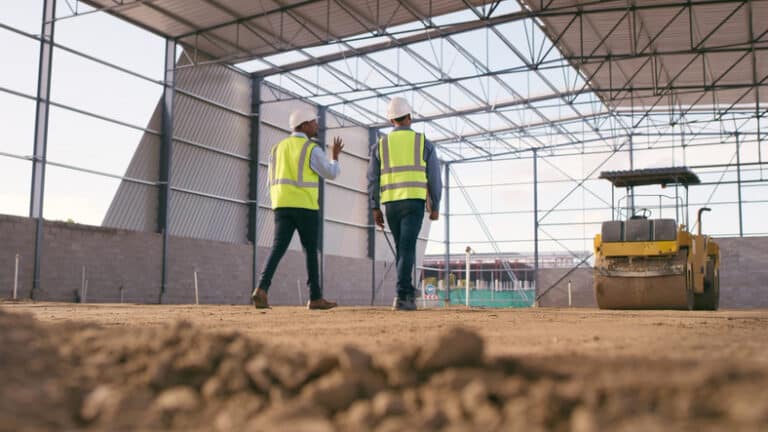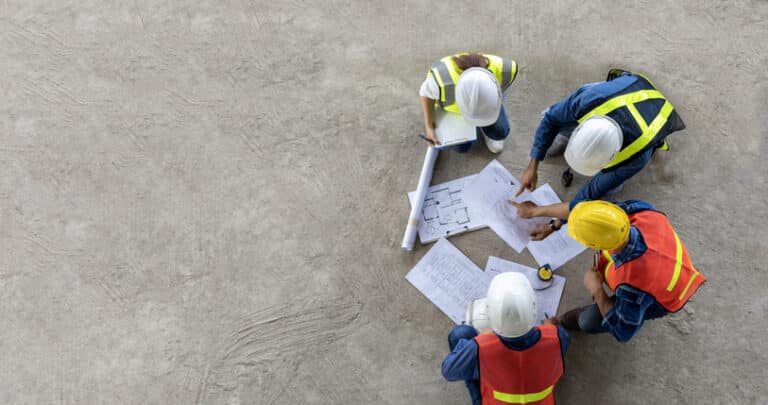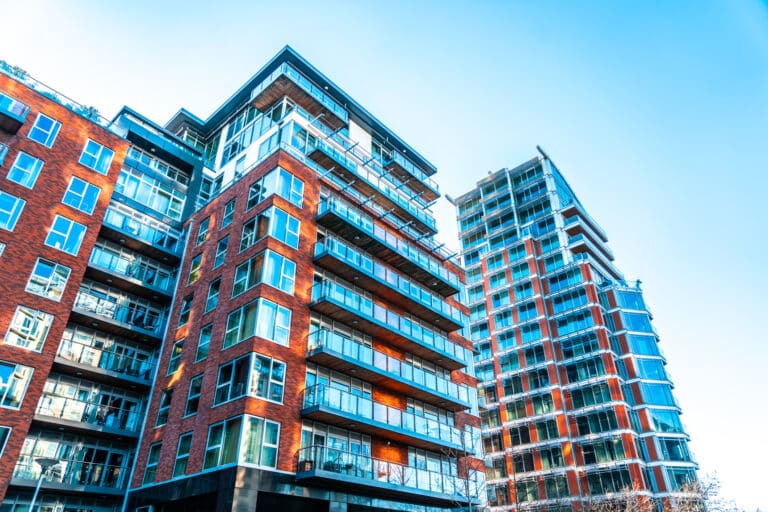As many working in the field know, the construction industry has to face up to the evolution that should have been happening for years. New technologies and materials are constantly being developed, which means those involved in the sector need to keep abreast of the latest trends to be competitive.
This article examines eight major construction industry trends that have the power to transform the sector and unlock all of the potential that has been lying dormant until now.
1. From BIM to DIM
The term Building Information Modeling (BIM) will evolve into the more easily understood Digital Information Management (DIM). Changing the acronym makes the technology seem more accessible to more people. The goal is to foster a broader knowledge, acceptance, and use of BIM concepts throughout the construction industry.
2. Digital Twin Technology
This technology produces a virtual model of a construction project that is continually updated in real-time. The advantages of a digital twin include the following.
- The ability to simulate different scenarios and see how they would play out in real life. This helps construction managers determine the most efficient way to build a structure and avoid potentially costly mistakes. Additionally, machine learning improves the accuracy of simulations over time, making the whole process even more effective.
- Helping with maintenance and repairs after the construction project is completed.
What distinguishes Digital Twin from BIM? Digital Twin spotlights the interplay between people and built environments, whereas BIM focuses more on design and construction visualization. The key takeaway is that digitalization is crucial to the future success of the construction industry.
BIM is the most essential source of information for a Digital Twin. Eventually, even during the design and construction phases of a project’s life cycle, Digital Twin will likely end up superseding BIM software.
3. Connected Construction Sites
Connected construction sites are made up of a network of people, equipment, vehicles, and devices that communicate with each other via wireless or digital technologies under the umbrella of a single organization. The advantages of having a connected construction site include the following.
- Enabling real-time communication between all team members, thus improving efficiency and safety.
- Allowing for the sharing of resources and data among team members to help reduce costs.
- Providing a centralized view of all activity on the job site, leading to better planning and coordination.
4. More Use of Construction Robotics
Robots can complete many repetitive and time-consuming tasks, thereby speeding up building processes. For instance, robots designed like mechanical arms can take over menial tasks like brick-laying. They also decrease the number of human-induced mistakes, ensuring greater safety with respect to hazardous jobs.
The future potential for construction robotics is great, but their use currently has some boundaries. For instance, they may be unable to navigate certain obstacles or work in certain weather conditions. However, with continued development, their limitations are likely to decrease.
5. Increasing Use of Drones
Drones are becoming more useful in many industries, and construction is no exception. They provide a unique perspective that can assist with a variety of tasks, including the following.
- Surveying a construction site before work begins to facilitate mapping and planning. This saves time and money—no need to send a human to physically investigate the site.
- Tracking the progress of a project. With a live view of the construction site, developers and contractors can identify potential problems early and fix them before they become worse.
- Documenting a building project’s progress, thereby providing an accurate record of how it was built.
- Performing safety inspections to identify any potential hazards and prevent accidents.
- Monitoring workers to ensure they are following safety guidelines. The use of drones for construction monitoring is still in its early stages, but it has great potential.
6. Green Building and Sustainability
More and more designers and builders are looking to create eco-friendly structures. Many different aspects need to be considered, from energy efficiency to using non-toxic materials. Here are some benefits of green building.
- Lowering of energy consumption and greenhouse gas emissions. (Buildings account for nearly 40% of global energy-related CO2.)
- Reduction in water usage.
- Sustainable, non-toxic materials are not only beneficial to the environment, but they also improve the quality of life for a building’s occupants.
7. More Development of Advanced Building Materials
Researchers continue to develop new and more advanced construction materials that are more effective and longer-lasting than traditional materials. Plus, they are becoming increasingly more affordable. Some examples are given below.
Graphene: Graphene is made from carbon and is thin, transparent, and stronger than steel. It has many other useful applications, including the following.
- Creating lightweight and durable coatings for buildings, helping to protect them from weather damage and other wear and tear.
- Use as an excellent thermal conductor to improve energy efficiency.
Calcium Silicate Board: This material is made from natural materials such as sand, clay, and lime. It’s resistant to fire, moisture, and pests and is non-toxic.
Bendable concrete (Engineered Cementitious Composite (ECC)): ECC is stronger than traditional concrete because it contains polymer-derived fibers. It has a smaller carbon footprint and is cost-effective.
Engineered timber: Products are made by engineering several types of softwood together, resulting in a very strong lumber material that can replace steel and concrete. This means fewer emissions and less waste during manufacturing.
Recycled materials: Such materials are currently being used to construct entire structures, albeit small ones for now.
3D printed building materials: Currently used to make such things as concrete walls and floors. While 3D printing can’t produce homes on a mass scale yet, it is already being used to create smaller buildings.
8. Prefabrication
Prefabricated or offsite construction means building elements are manufactured away from the construction site before being delivered to and assembled on-site. This type of construction is not new, but it is seeing a resurgence due to the many advantages it offers, including the following.
- Faster construction times: Because the building components are factory-made, they can be assembled much more quickly on-site as opposed to traditional construction methods.
- Reduced waste: Offsite construction results in less waste on-site.
- Lowered labor costs: Using prefabricated components reduces the amount of manual labor needed on-site. This is a timely construction industry trend, as there is a shortage of workers in the construction industry.
- Reduced environmental impact: Construction off site results in less dust, noise, and pollution on-site.
Koehn Construction (pronounced “cane”) specializes in the design-build method for commercial construction, which means the project owner only needs to work with a single contractor: us! We work with the designer and manage all subcontractors. Everyone on our design-build team is focused on the end product and delivering work that is of the highest quality. Contact us today for more information and a free quote!


